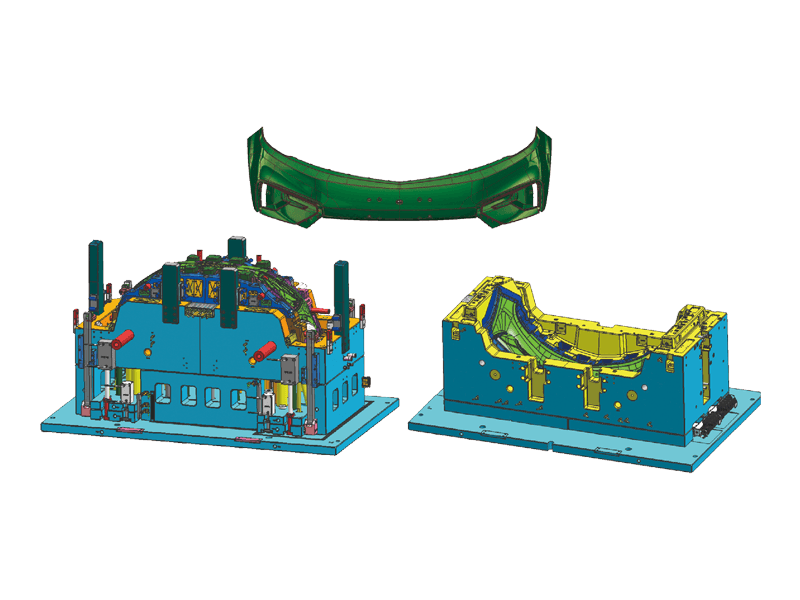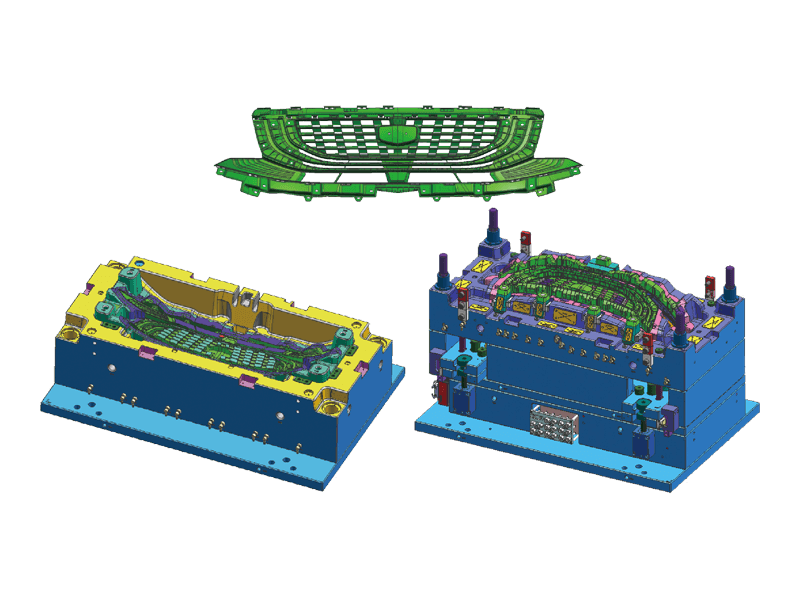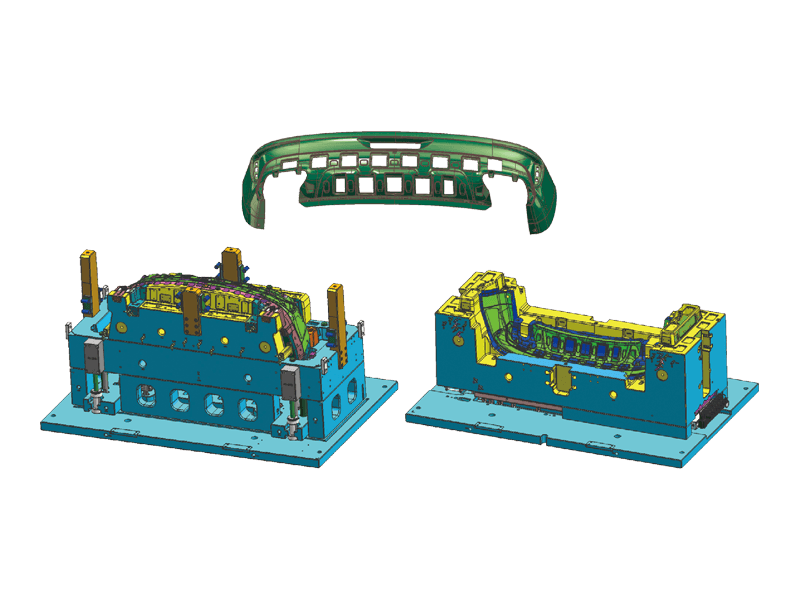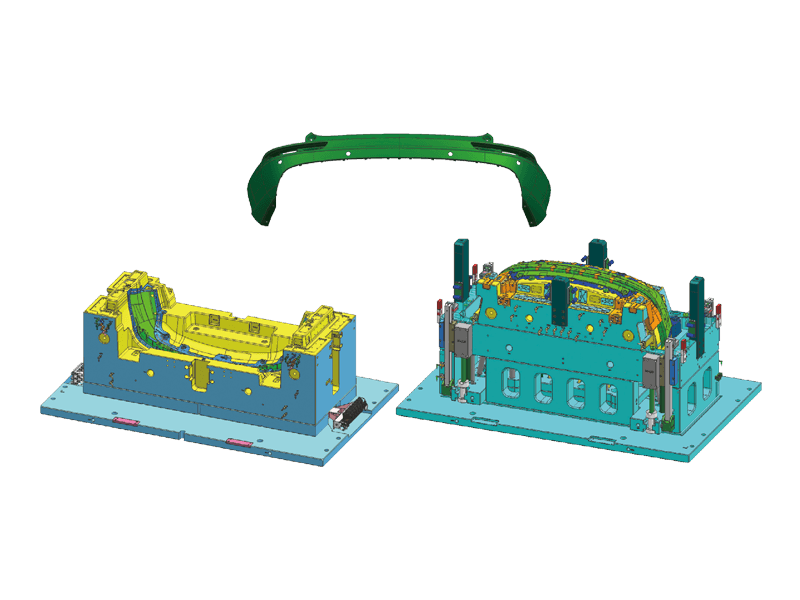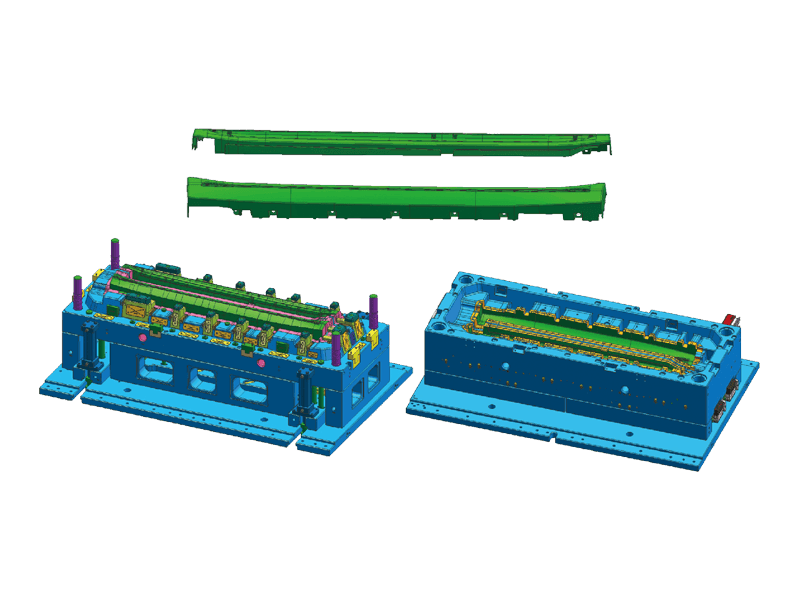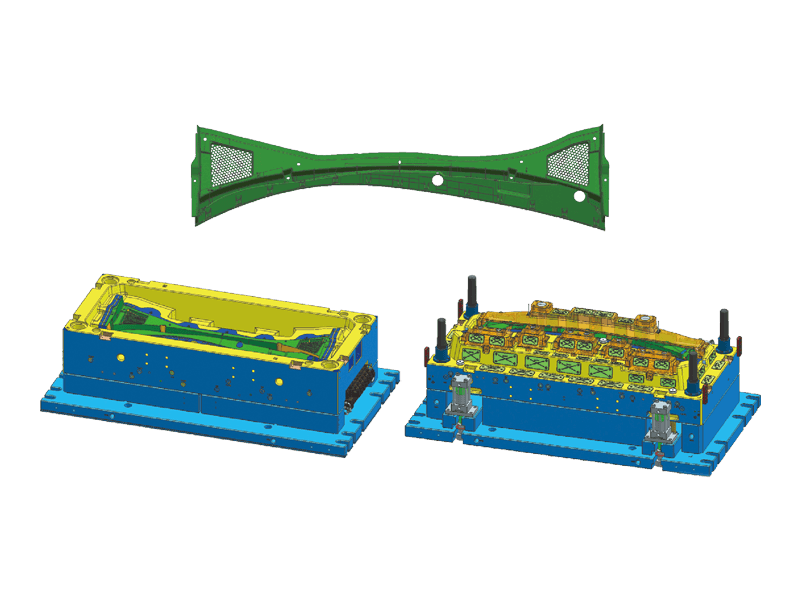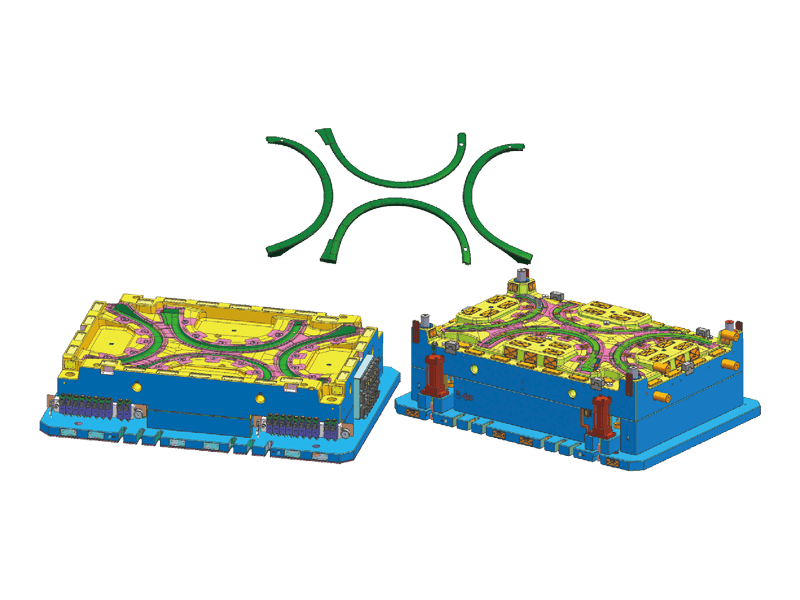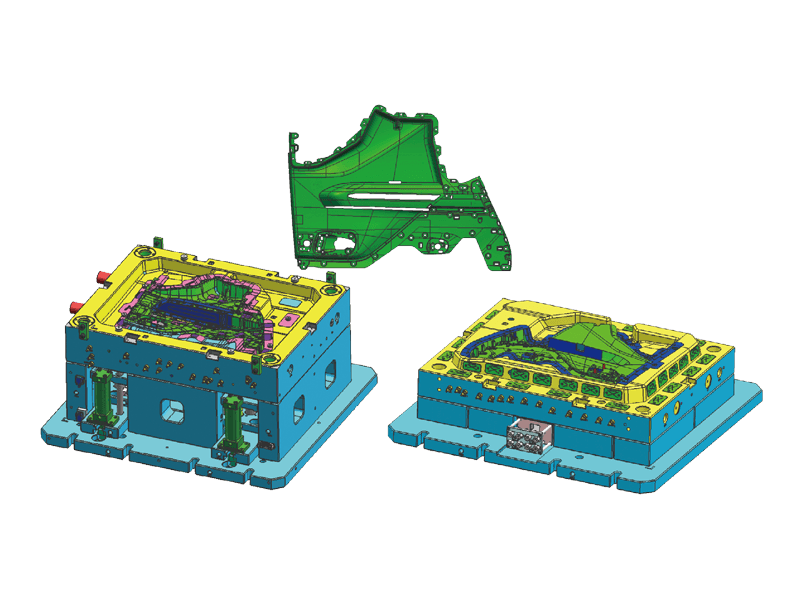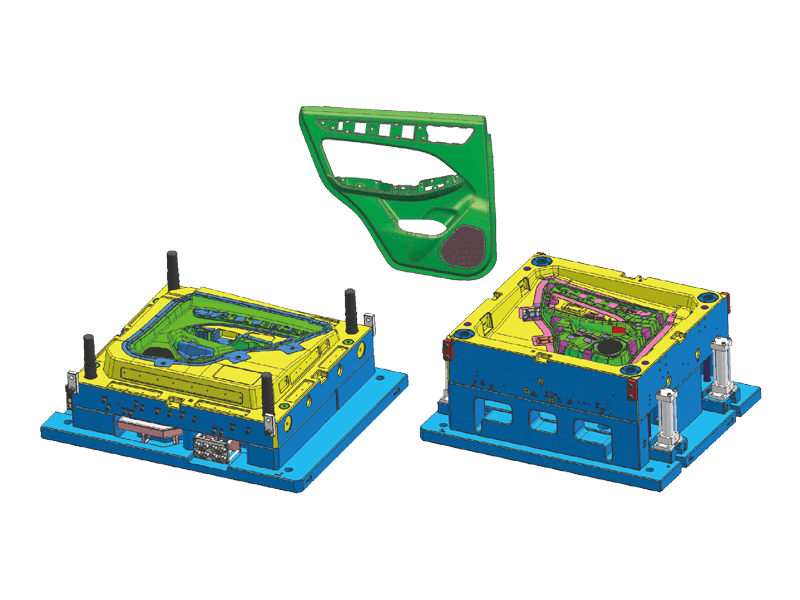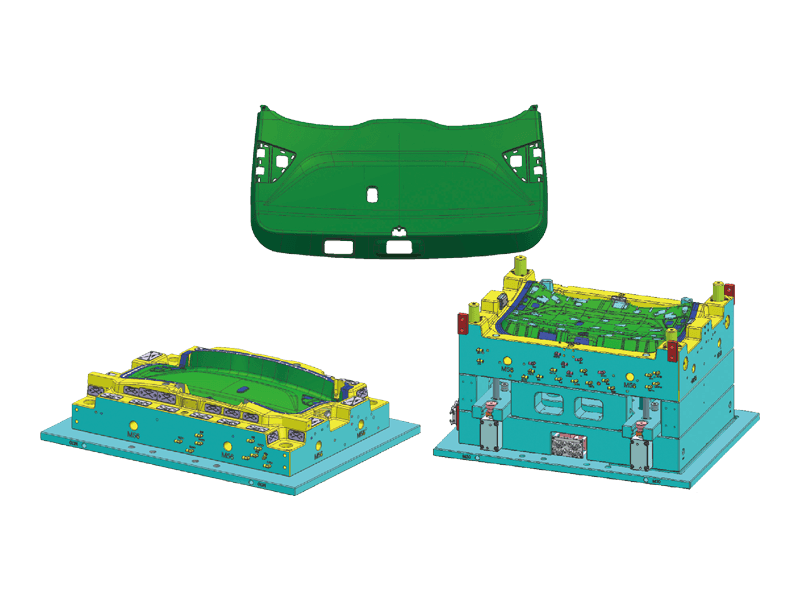In today’s fiercely competitive automotive industry, every gram saved and every second shaved off the assembly line translates into measurable market advantage. One technology that quietly underpins this race is the Automobile Plastic Baic Front Door Panel Injection Mold. Far more than a simple production tool, this mold is the hidden architect of a vehicle’s impression: the front door panel that greets every driver and passenger. Below, we explore how the Automobile Plastic Baic Front Door Panel Injection Mold is designed, engineered, and refined to deliver precision, durability, and style.
From CAD to cavity: designing the Automobile Plastic Baic Front Door Panel Injection Mold
The journey begins in the digital realm. Engineers import the styling surface of the BAIC front door panel into CAE software, where they simulate plastic flow, cooling channels, and warpage. Because the Automobile Plastic Baic Front Door Panel Injection Mold must accommodate large dimensions—often exceeding 1.4 m × 1.4 m—special attention is paid to draft angles, rib thickness, and gate locations. Hot-runner layouts with sequential valve gating are selected to eliminate weld lines in visible zones, while side-core and inclined-lifter mechanisms are planned for the eleven undercuts that form speaker grills, handle pockets, and sealing grooves. By the time the CAD file is frozen, the Automobile Plastic Baic Front Door Panel Injection Mold has already lived a thousand virtual lives.
Material selection: steel that thinks like plastic
A mold that will cycle millions of times demands steel that marries hardness with thermal conductivity. For the Automobile Plastic Baic Front Door Panel Injection Mold, pre-hardened P20 or 2738 steel is chosen for the cavity and core, while H13 inserts are used in high-wear areas such as the latch striker boss. The runner plate is milled from 718H to resist deformation under sustained 230 °C melt temperatures, and every slide or lifter is nitrided to 65 HRC to fight abrasive glass-filled PP-LGF compounds. This meticulous metallurgy ensures the Automobile Plastic Baic Front Door Panel Injection Mold retains tolerances of ±0.01 mm over a projected service life of 500 000 shots.
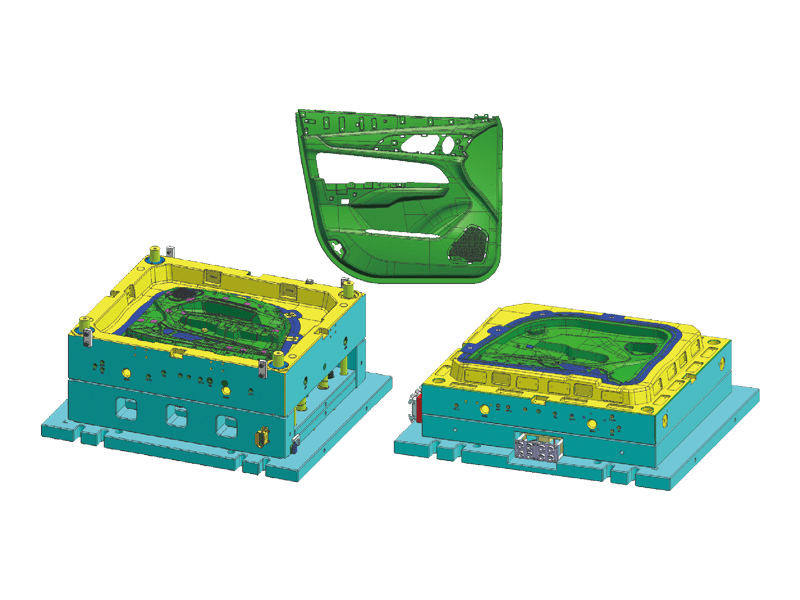
The injection cell: where seconds matter
On the press, the Automobile Plastic Baic Front Door Panel Injection Mold is clamped at 3 500 tons while a 20-second cycle unfolds. Pellets of UV-stabilized polypropylene are plasticized at 210 °C, injected at 1 200 bar, then packed and cooled under controlled cavity pressure. Mold temperature is held at 70 °C by turbulent water channels placed 12 mm from the cavity wall; beryllium-copper cores in thick sections accelerate heat extraction to prevent sink marks. When the press opens, synchronized nitrogen-spring ejectors lift the panel clear of the Automobile Plastic Baic Front Door Panel Injection Mold, ready for robotic trimming and inline leak testing.
Quality loops: data that guards protection
Every 30th shot, a laser scanner digitizes the entire panel, feeding point-cloud data back to the Automobile Plastic Baic Front Door Panel Injection Mold team. Deviations beyond 0.2 mm trigger automatic root-cause analysis: Was the melt temperature drifting? Did a valve gate hesitate? The mold’s built-in pressure and temperature sensors stream real-time curves to a dashboard that follows the part through welding, painting, and final trim. Over weeks, this feedback loop fine-tunes process windows and validates the Automobile Plastic Baic Front Door Panel Injection Mold as a closed-loop manufacturing system.
Sustainability: lighter, greener, smarter
By consolidating eight metal brackets into a single molded substrate, the Automobile Plastic Baic Front Door Panel Injection Mold trims 1.2 kg from each vehicle. That weight reduction saves roughly 90 kg of CO₂ over the car’s lifetime. Scrap is minimized thanks to hot-runner recycling, and end-of-life panels are marked with laser-etched resin codes for easy segregation. BAIC’s next-generation Automobile Plastic Baic Front Door Panel Injection Mold is even exploring foamed-core technology to cut another 300 g without sacrificing stiffness.


 English
English 中文简体
中文简体